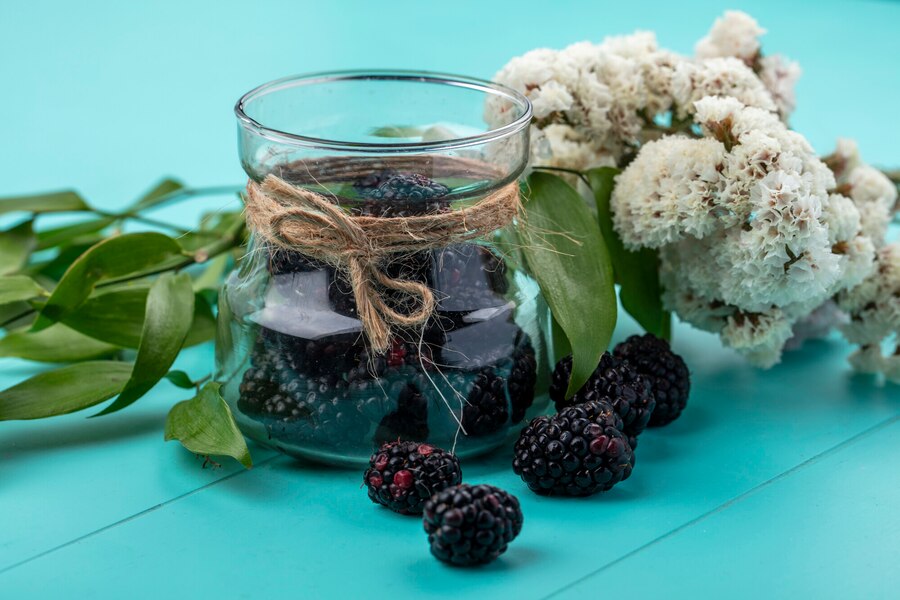Introduction
Mulberry bark, derived from the mulberry tree (Morus species), has been used for centuries in traditional medicine, paper-making, and skincare. But what exactly is mulberry bark, and why is it gaining popularity in health and wellness circles? In this comprehensive guide, we’ll explore its origins, benefits, and various applications to help you understand its significance.
What is the Mulberry Bark?
Mulberry bark refers to the outer covering of the mulberry tree, primarily sourced from the white mulberry (Morus alba), black mulberry (Morus nigra), and red mulberry (Morus rubra). Traditionally, it has been utilized in Chinese medicine for its medicinal properties, particularly in respiratory and skin health.
Quick Facts About Mulberry Bark
- Botanical Name: Morus spp.
- Common Uses: Herbal medicine, skincare, paper-making
- Key Components: Flavonoids, alkaloids, tannins
- Benefits: Anti-inflammatory, antibacterial, antioxidant
Nutritional and Medicinal Properties
Mulberry bark is rich in bioactive compounds that contribute to its healing properties:
- Flavonoids: Powerful antioxidants that combat oxidative stress
- Alkaloids: Naturally occurring compounds with medicinal effects
- Tannins: Known for antimicrobial and anti-inflammatory properties
- Resveratrol: A polyphenol with heart and skin benefits
Health Benefits of Mulberry Bark
- Supports Respiratory Health
- Used in traditional Chinese medicine to treat cough, asthma, and bronchitis.
- Has expectorant properties, helping to clear mucus buildup.
- Promotes Skin Health
- Used in skincare for its brightening and anti-aging properties.
- Helps in reducing hyperpigmentation and acne due to antibacterial effects.
- Aids Digestive Health
- Acts as a natural laxative, supporting gut health.
- Helps relieve bloating and indigestion.
- Boosts Immune System
- Rich in antioxidants that help fight infections.
- Supports overall immune function by reducing inflammation.
- Regulates Blood Sugar Levels
- May help in managing diabetes by regulating glucose metabolism.
- Contains compounds that improve insulin sensitivity.
Popular Uses of Mulberry Bark
1. Traditional Herbal Medicine
Mulberrybark has been a staple in Ayurveda and Traditional Chinese Medicine (TCM) for treating various ailments, from respiratory issues to skin diseases.
2. Skincare & Beauty Products
Due to its skin-lightening properties, mulberrybark extract is found in:
- Serums and creams for hyperpigmentation
- Anti-aging products
- Acne treatments
3. Natural Paper Production
Mulberrybark fibers are widely used in:
- Handmade paper crafting
- Eco-friendly packaging
- Artisanal bookbinding
4. Textile & Fiber Industry
The fibers from mulberrybark are utilized in making:
- Traditional Japanese Washi paper
- Natural fabrics and textiles
5. Tea & Herbal Supplements
Mulberrybark is commonly brewed into tea or included in herbal formulations for:
- Detoxification
- Weight management
- Blood sugar control
How to Use Mulberry Bark Safely
Precautions & Side Effects
- Dosage: Always follow recommended dosages from herbal practitioners.
- Pregnancy & Breastfeeding: Consult a healthcare provider before use.
- Allergies: Conduct a patch test before using mulberrybark in skincare.
- Medication Interactions: May interact with blood sugar or blood pressure medications.
Where to Buy MulberryBark
- Online Herbal Stores: Trusted platforms like Amazon, iHerb, and specialty herbal shops.
- Health & Wellness Stores: Look for organic, high-quality sources.
- Asian Medicine Shops: Authentic sources of traditional herbal products.
Comparison Chart: Mulberry Bark vs. Other Herbal Remedies
| Feature | Mulberry Bark | Licorice Root | Ginseng |
|---|---|---|---|
| Primary Benefit | Skin & respiratory health | Digestive aid & anti-inflammatory | Energy & cognitive boost |
| Key Compounds | Flavonoids, tannins | Glycyrrhizin, flavonoids | Ginsenosides |
| Traditional Use | Chinese & Ayurveda | TCM & Western Herbalism | TCM & Korean medicine |
| Common Form | Extract, tea, powder | Tea, capsules, powder | Extract, capsules |
Final Thoughts
Mulberry bark is a powerful natural remedy with multiple health, skincare, and industrial applications. Whether you’re looking to improve respiratory health, enhance your skincare routine, or explore eco-friendly materials, mulberrybark offers incredible benefits.










